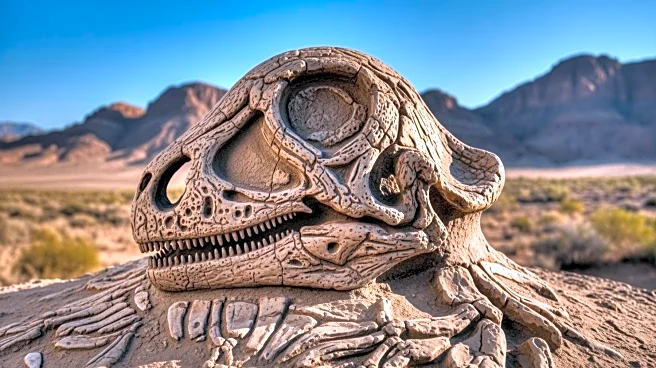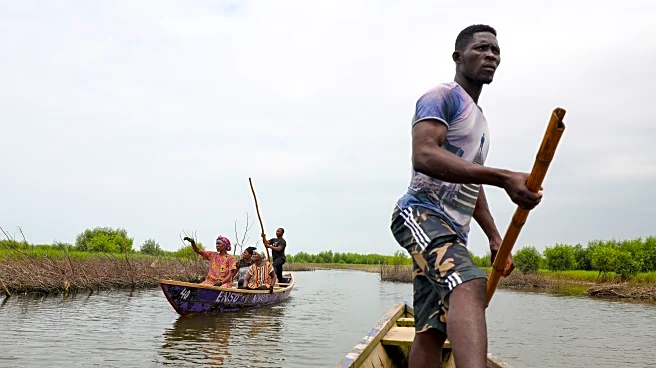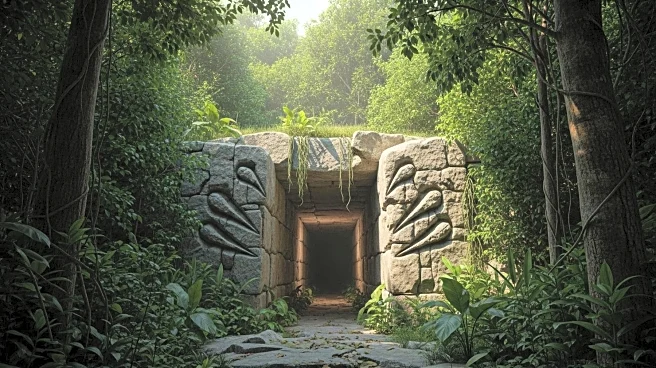What's Happening?
A significant paleontological discovery has been made in Ecuador, where researchers have unearthed multiple pieces of insect-bearing amber dating back 112 million years. This amber, formed during the Cretaceous era, provides a glimpse into the ancient ecosystem of a prehistoric forest that existed when South America was part of the supercontinent Gondwana. The amber contains fossilized insects, including flies, beetles, ants, and wasps, as well as plant fossils such as spores and pollens. The discovery is notable because most fossilized resin has previously been found in the Northern Hemisphere, making this find in South America particularly important. The amber samples were found in a quarry and include two types: one formed underground around tree roots and another formed when resin was exposed to air.
Why It's Important?
This discovery is crucial for understanding the biodiversity and environmental conditions of the Southern Hemisphere during the Cretaceous period. The amber fossils provide insights into the types of organisms that inhabited the ancient forests of Gondwana, which included regions that are now South America, Africa, and other parts of the world. The presence of angiosperm leaf assemblages suggests a moderately diverse forest ecosystem, contributing to our knowledge of plant evolution and the ecological dynamics of prehistoric times. This research enhances our understanding of Earth's history, particularly the development of ecosystems in the Southern Hemisphere, which has been less studied compared to the Northern Hemisphere.
What's Next?
The findings from this discovery are expected to lead to further research into the ancient ecosystems of Gondwana. Scientists may conduct additional excavations in the region to uncover more amber deposits and fossils, which could provide further insights into the biodiversity and climatic conditions of the era. The study of these amber samples may also prompt comparisons with similar finds in other parts of the world, helping to build a more comprehensive picture of global prehistoric ecosystems.
Beyond the Headlines
The discovery of amber in Ecuador not only sheds light on ancient ecosystems but also raises questions about the preservation of biodiversity over millions of years. The study of these fossils can inform current conservation efforts by highlighting the resilience and adaptability of ecosystems in the face of changing environmental conditions. Additionally, the research may contribute to discussions on the impact of continental drift and climate change on biodiversity throughout Earth's history.












